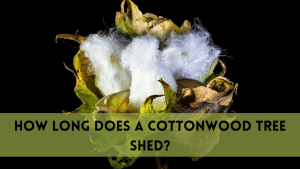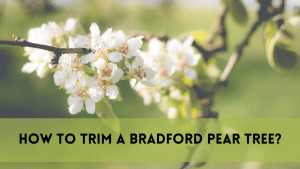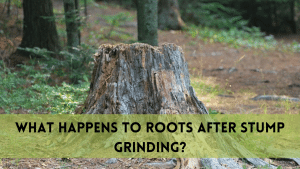Have you noticed a squirrel nest appearing in one of the trees around your house recently? On the one hand, squirrels are adorable little creatures and fun to watch. On the other, they can cause damage to trees, attics, and gardens. If a squirrel nest on your property has you scratching your head wondering what to do, you’ve come to the right place. In this article, we’ll walk you through when it makes sense to remove a squirrel nest, the pros and cons to consider, and how to get rid of one properly without harming the squirrels or breaking the law. By the end, you’ll feel confident in your decision and equipped with a plan of action. So grab a cup of coffee and let’s chat about your new furry neighbors.
Understanding Squirrel Behavior: Why They Build Nests in Trees
Squirrels build nests high up in trees to keep their young safe, sheltered, and hidden away from predators. As a homeowner, you may wonder if it makes sense to remove an active squirrel nest from a tree on your property. There are a few factors to consider:
Squirrel behavior
Squirrels are most active in the spring and summer when caring for their young. During this time, the squirrels may become defensive of their nest. It’s best to avoid disturbing an active nest with babies present. Only remove nests in the fall or winter when squirrels are less active and nesting season is over.
Potential damage
Squirrel nests are made of leaves, twigs, and other debris that the squirrels gather. Over time, these materials can damage the tree by promoting disease or insect infestation. Removing an old, unused nest helps ensure the health of the tree.
Safety concerns
Large squirrel nests, especially when located high up in a tree, can potentially fall and cause injury or property damage. It may be safest to remove insecurely built or precariously placed nests.
Humane removal
The most ethical way to remove a squirrel nest is to install a one-way door or wire mesh over the nest opening. This allows any squirrels inside to escape but prevents re-entry. After a few days, you can safely remove the nest. Never seal off a nest with squirrels trapped inside.
With the proper precautions taken, removing a squirrel nest from your property can be done humanely and for the right reasons. But whenever possible, it’s best to appreciate squirrels and their fascinating behaviors from a distance! Allowing squirrels to remain undisturbed in suitable habitat is ideal.
Potential Risks of Leaving a Squirrel Nest in a Tree
Leaving a squirrel nest in a tree on your property can pose some risks to consider.
Structural Damage
Squirrels can chew through trees, wood siding, and electrical wires. Their constant gnawing and nest-building activities may weaken tree branches or even damage the tree itself over time. There’s also a chance of branches breaking or the nest falling, which could injure people or property below.
Disease and Infestation
Squirrel nests left unattended can become infested with parasites like fleas, ticks, and mites which may spread to pets or humans. There’s also a risk of diseases transmitted by their droppings like Leptospirosis. Allowing squirrels to reside in a tree provides them access to your yard, where their waste and parasites can build up.
Aggressive Behavior
Female squirrels, especially, can become quite territorial and aggressive in defending their nesting area. As squirrels become accustomed to humans, they may charge, chase, or even attack when they perceive a threat to their nest or young. While rare, squirrel bites can transmit diseases and cause injury.
It’s best to take a proactive approach in preventing unwanted squirrel nests in the first place. Installing barriers like wire mesh, metal sheeting or netting, especially in areas where branches meet the structure, will help block access points to attics, under decks, and inside trees. Regularly inspecting trees for new nest starts and promptly removing them in a humane way can help avoid bigger problems down the road. By discouraging squirrels from settling in, you’ll promote a healthier environment for your property and avoid risks to your home, family, and the squirrels themselves.
Benefits of Allowing the Nest to Remain
Allowing a squirrel nest to remain in its tree can have some benefits for both the squirrels and you as the homeowner.
Natural pest control
Squirrels prey on insects and other small animals that may damage your yard or garden. By leaving their nest intact, you ensure that these natural pest controllers stick around. Their appetite for pests like caterpillars, beetles, and grubs will help keep populations in check without the use of chemicals.
Entertainment value
Watching squirrels in their natural habitat can provide hours of enjoyment and amusement for you and your family. Squirrel kits (babies) emerging from the nest for the first time are especially adorable and fun to observe. As the kits grow, seeing the squirrel parents care for and teach their young survival skills is a rewarding experience for any nature lover.
Preserving the cycle of life
If there are live squirrel kits in the nest, removing it will mean certain death for these baby squirrels. By allowing the nest to remain until the kits are old enough to survive on their own, you enable these creatures to live out their natural lifecycle. This helps maintain balance in your local ecosystem and environment.
Of course, there are also reasons you may need to remove a squirrel nest, such as damage to property or the risk of disease. But if the nest is not currently causing any problems, allowing nature to run its course and the squirrel family to remain undisturbed can be the most ethical and ecologically-friendly option. Appreciating wildlife in our own backyards helps foster a spirit of coexistence and nurtures a connection to the natural world around us.
How Should I Remove Squirrel Nest from Tree?
Once you’ve decided it’s time to remove a squirrel nest from a tree on your property, there are a few tips to keep in mind. The goal is to do it as safely and humanely as possible.
Schedule the removal for when squirrels are active
Time the nest removal for spring or summer when squirrels are most active. This increases the chance that the squirrels will already have left the nest, reducing the possibility of trapping babies inside. It’s best done in the late afternoon when squirrels forage for food before nightfall.
Wear protective gear
Squirrels may become aggressive in defense of their nest, so take proper precautions. Wear thick gloves, protective eyewear, and heavy clothing. You may also want to consider wearing a hat.
Use a pole to remove nesting material
If possible, remove as much of the nest as you can using an extendable pole with a grasping tool attached, while staying on the ground. Slowly pull pieces of the nest out bit by bit so squirrels have a chance to flee. Repeat this over several days until most of the nest is cleared out.
Hire a professional if necessary
For nests that are too high up or difficult to reach, it’s best to hire a professional tree service to remove the nest. They have the proper equipment and experience to remove nests safety. They can also safely remove any remaining squirrels and seal up entry points to prevent the nest from being rebuilt.
Clean up debris and seal any holes
Once the nest has been removed, clean up any remaining debris around the base of the tree. Also, seal up any visible holes or cracks in the tree trunk to block access and discourage squirrels from rebuilding. You may need to re-seal holes periodically.
With patience and the proper precautions taken, removing a squirrel nest from your tree can be done safely and humanely. By starting with non-invasive methods, you give the squirrels their best chance to vacate on their own. But if they persist, professional help may be your best option.
Alternatives to Nest Removal: Deterring Squirrels Humanely
Rather than removing a squirrel nest altogether, you may want to first try deterring squirrels humanely before resorting to more drastic measures.
Exclusion and Repellent Methods
You can install exclusion barriers like wire mesh, netting, or metal flashing over holes leading into attics, under decks, or around foundations to block squirrel access. Motion-activated sprinklers, ultrasonic repellents, and predator urine also deter squirrels in a humane way.
Provide Alternative Shelter
Installing nesting boxes away from homes gives squirrels alternate shelter. Place the boxes at least 20 feet high, with openings at least 5 inches in diameter. The boxes should be made of wood, metal, or plastic and be weather-resistant. Squirrels prefer secluded, protected areas away from disturbances.
Remove Food Sources and Hazards
Eliminating food sources like nuts, seeds, and fruit under trees will make the area less habitable. Also, trim overhanging branches that provide easy access to attics or roofs. Squirrels can injure themselves on sharp, exposed wires, so install protectors over any exposed cables.
Live Trapping
As a last resort, you can hire a professional to live trap squirrels and release them at least five miles away in a suitable habitat. Make sure babies are old enough to survive on their own before trapping adults. Live trapping is a humane method, but should only be used after other deterrents have failed and with guidance from wildlife authorities regarding regulations in your area.
With patience and persistence, humane squirrel deterrents are often effective. However, in some cases professional nest removal may be necessary to prevent damage or ensure safety. When done properly by a wildlife professional, nest removal can provide a permanent solution while still respecting the lives of these fascinating creatures.
Can I Remove a Squirrel Nest Myself?
While it’s technically possible, it’s recommended to seek professional advice to ensure the safety of both the animals and your property.
Will Removing a Squirrel Nest Disturb the Squirrels?
Yes, removal can disturb the squirrels. It’s best to time the removal when the nest is unoccupied to minimize disruption.
How Far Should Squirrel Nests Be from Power Lines?
Ideally, nests should be at least 30 feet away from power lines to prevent potential hazards.
Conclusion
So there you have it. Squirrels may be adorable, but their nests can become real nuisances if left unchecked. Now you’re equipped with the knowledge to determine whether removal makes sense in your situation and how to go about it in a humane and responsible way. Whether you choose to evict your furry tenants or find a way to peacefully coexist, you can feel good knowing you made an informed decision. The squirrels may have to find a new place to raise their young, but at least you’ll have a yard free of damage and the satisfaction of handling the situation properly. Not too shabby! Best of luck resolving your squirrely situation.




